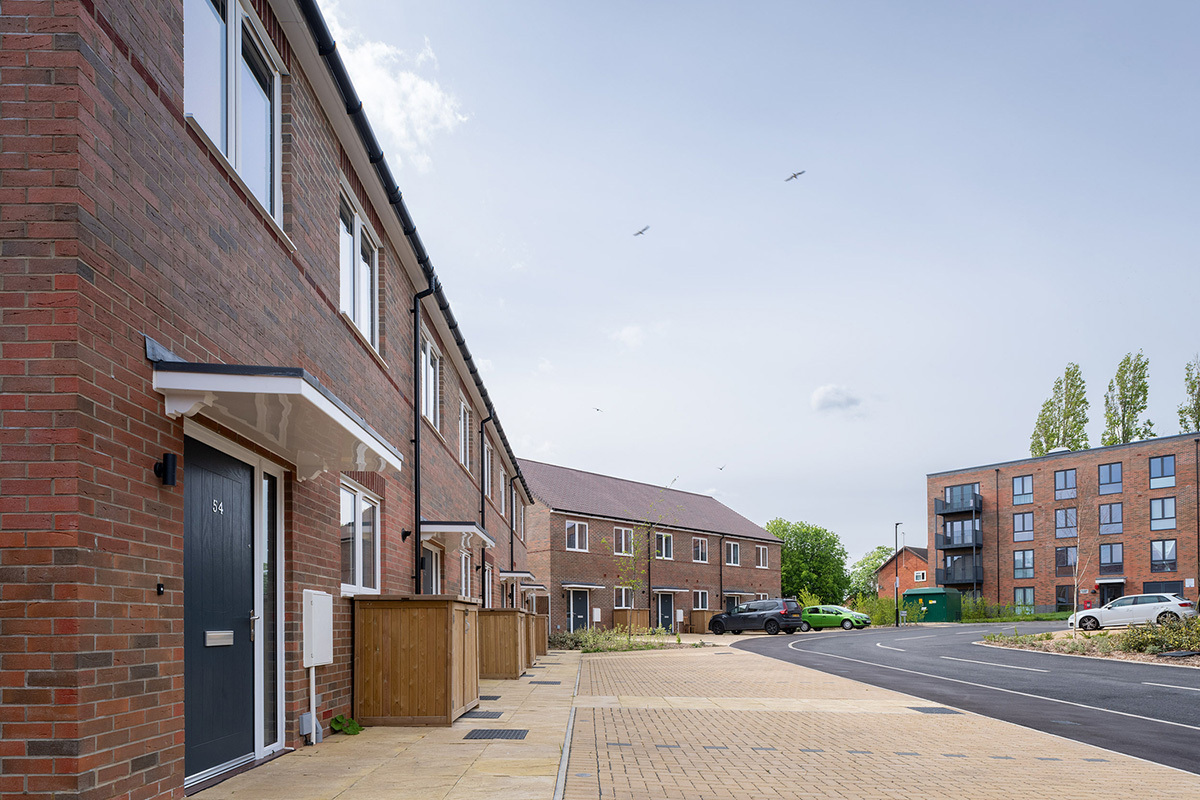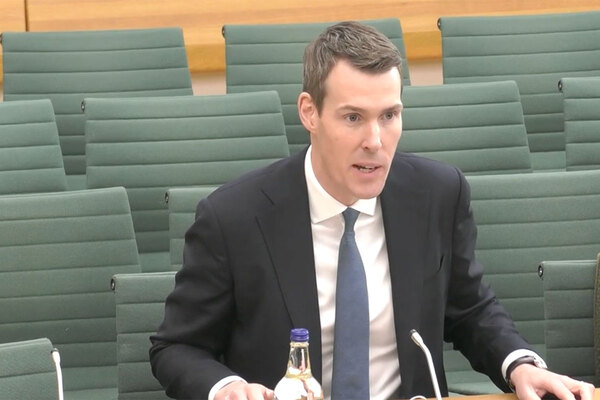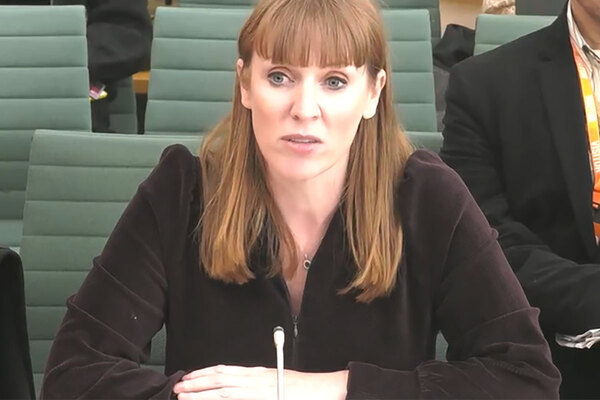Labour’s housing plans: a tale of three targets
Jules Birch asks what Angela Rayner’s commitments at the Housing, Communities and Local Government Committee tell us about Labour’s approach to housing
What’s in a target? Angela Rayner faced questions at the Housing, Communities and Local Government Committee last week and gave some illuminating answers to kick off 2025.
First up was the target that is a key milestone in the government’s mission on economic growth: the manifesto promise of 1.5 million additional homes over this parliament.
The deputy prime minister faced a series of questions about whether the target is achievable and what will have to happen in later years to make up the shortfall when fewer than 300,000 a year are built in the early years.
She ran through the measures the government was taking and summed it up with an unfortunate metaphor: “So there are a number of levers that we’re pulling at the moment which will hopefully start to turn the tide, but it’s a bit like the Titanic, it’s not like one of the Hackney cabs that can turn really quickly. It will take more time in the early stages before we start to see the shoots.”
It’s clear what she meant, but it wasn’t a good start to conjure up images of icebergs ahead. Much better was her admission that: “Even if this government achieves the 1.5 million-homes target, it is a dent. It is a dent in what we need to achieve as a whole country to deliver the houses we desperately need.”
It was also good that she acknowledged concerns about development by housing associations and about Section 106, while promoting initiatives to accelerate new homes and remove blockages on stalled sites. So, too, was her emphasis on the importance of land value capture, the grey belt and the balance that has to be struck with viability.
But 300,000 new homes a year have not been achieved since the heyday of council housing, so I was intrigued to see what she would say about social housing in the present day.
This was the key question from Florence Eshalomi, the chair of the commitee: “On social housing, obviously your predecessor had a target of 30,000 new homes, Secretary of State. In terms of the issues that you outlined, in terms of homelessness, in terms of people on waiting lists, how are you going to make a dent in that if we don’t have a figure and a target for how many new social homes are going to be built by this parliament?”
“Labour has repeatedly doubled down on 1.5 million, but why should we be confident that this government will hit it over this parliament when the last Tory administration missed the easier target of 300,000 a year by the end of the previous one?”
Ms Rayner replied: “The reason I haven’t put a target on it is because, first of all, every government has failed to meet the target that they’ve set.”
She’s right, of course. Michael Gove, the previous housing secretary, never came anywhere close to achieving his aspiration of 30,000 new social homes a year, but he was still investing significant political capital by saying that in an ITV News interview with Daniel Hewitt about his investigation of housing conditions.
And her point about governments failing to meet their targets could be made with even more force about overall housebuilding numbers.
Labour has repeatedly doubled down on 1.5 million, but why should we be confident that this government will hit it over this parliament when the last Tory administration missed the easier target of 300,000 a year by the end of the previous one?
The second reason was, she said, that “there’s a number of different permutations. So, depending on the local plan, which I’m not in control of because it’s a local plan, they will identify the areas of land that could be used, and then depending on the area of land that could be used and the land value and other factors, dependent upon how many social and council homes you can get from it.”
Again, that sounds sensible at first glance: you can’t say how much social housing will be delivered by Section 106 and planning agreements until you know what’s in local plans.
But the market and planning system only account for half the social and affordable homes delivered (and much less than that right now), with the rest directly funded by the government. Ms Eshalomi followed up by asking what the minimum target was.
Ms Rayner replied: “Well, I think the minimum level is that I’ve said: the biggest wave of social and council housing for a generation. So that’s quite a big target. I don’t want to fall below where we’ve been in the past. I want to way exceed that.
“But the challenge, and the reason we’ve put the golden rules in, and the reason that we’ve put so much resources into making sure that developers don’t wriggle out of their obligations under 106 notices, and giving the councils the full Right to Buy receipts and the additional money into the Affordable Homes Programme, is all about making sure we can deliver more social housing.
“But it would be ill-advised to, with all those moving parts, to try and give you an exact, definitive figure, because it would be impossible.”
“Targets are, of course, not a panacea, and a big problem with them is that overall policy can be distorted by the need to hit them”
It’s interesting that she said “social and council housing” rather than “social and affordable housing”, but I haven’t seen her say what “the biggest wave” actually means.
Is it the number of homes, in which case, does that mean social or affordable? Or does it mean the amount of investment, in which case, is that in nominal terms (which would make it much easier to claim a record increase) or real terms (much harder)?
The problem, I’m guessing, is that to set any kind of explicit target for social housing – even a minimum one – would be to make an implicit spending commitment. That cannot be done until the Spending Review in a few months’ time, and even then, the Treasury will resist.
The same might apply to another target she was asked about: a timeline for ending homelessness.
Ms Rayner replied: “I think it’s really challenging to set a timeline for it, and in particular the challenges we face with the inheritance that we’ve got at the moment and the projections of where homelessness is going.”
Again, that’s true. She showed great empathy for homeless people she met over Christmas and a good grasp of the balance that has to be struck between long-term policies to reduce the number of people becoming homeless and short-term assistance for those who do.
However, the absence of targets to reduce, say, the number of rough sleepers or the number of families in bed and breakfasts, is glaring. Previous governments have not just set them, but met them.
Targets are, of course, not a panacea and a big problem with them is that overall policy can be distorted by the need to hit them.
As an example: an expectation is growing in the housebuilding sector that the government will be forced to reintroduce a version of Help to Buy as the shortfall against 1.5 million homes becomes clear.
But targets also concentrate minds within government and make it possible to hold them to account. Just ask the Welsh government about scrutiny of its target of 20,000 social homes by 2026, or the Scottish government about its recent reversal of funding cuts in pursuit of its target of 110,000 affordable homes by 2032.
Is it too much to ask the English government to match them?
Jules Birch, columnist, Inside Housing
Sign up for our daily newsletter
Already have an account? Click here to manage your newsletters













